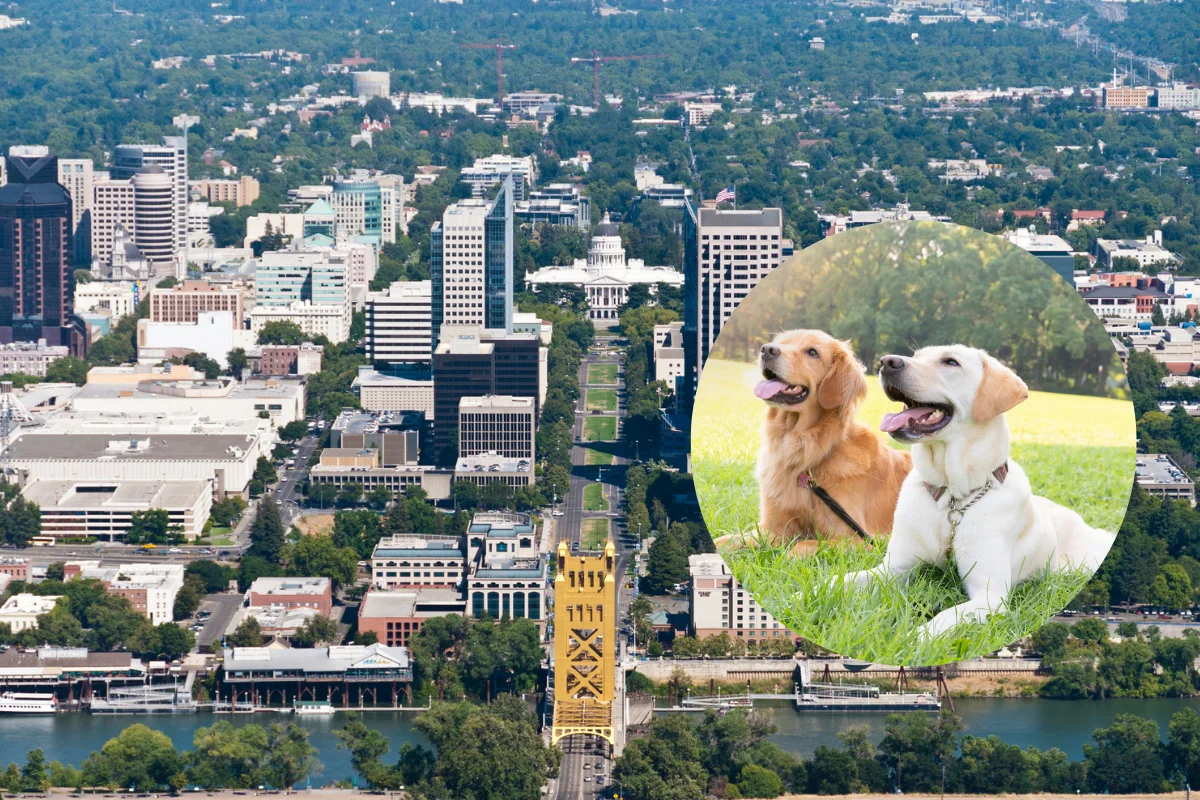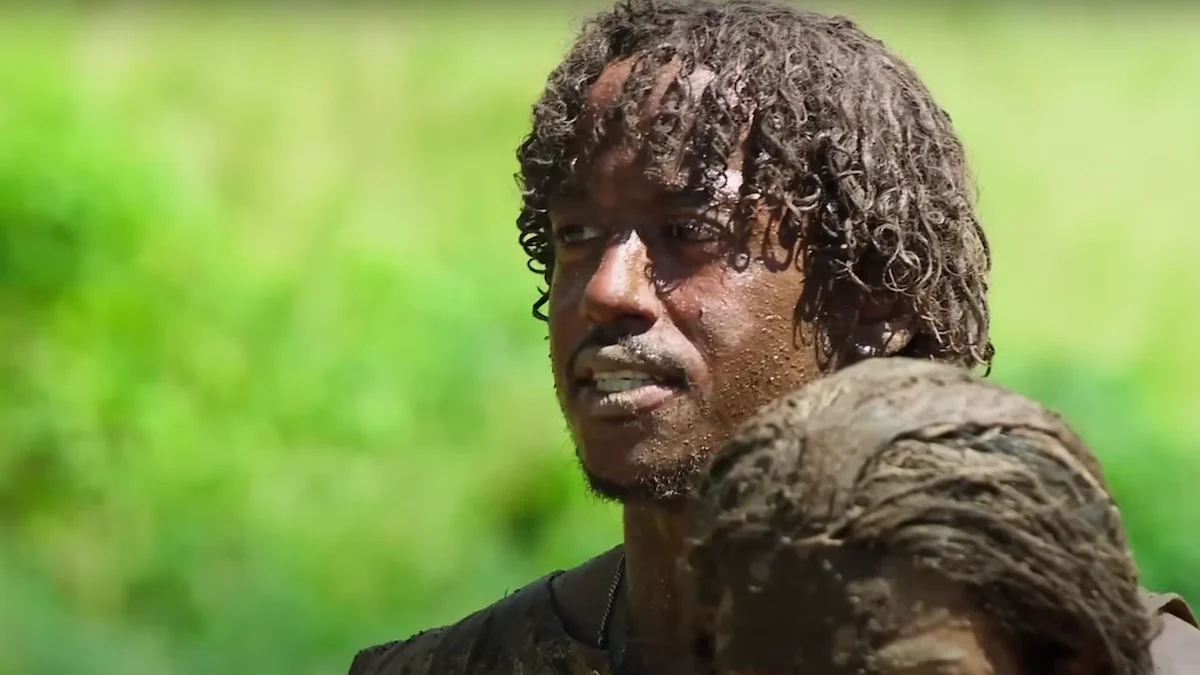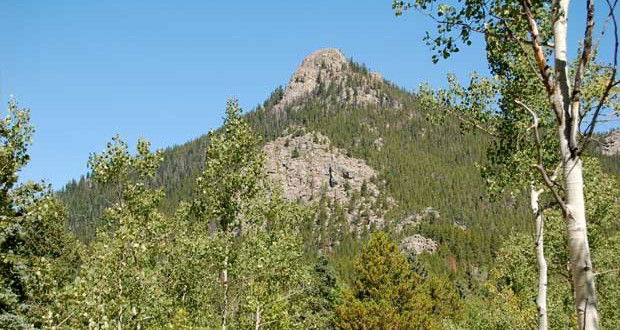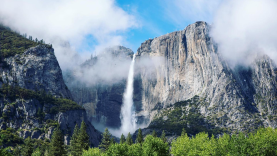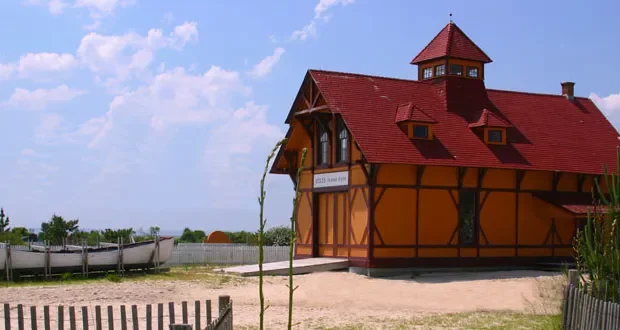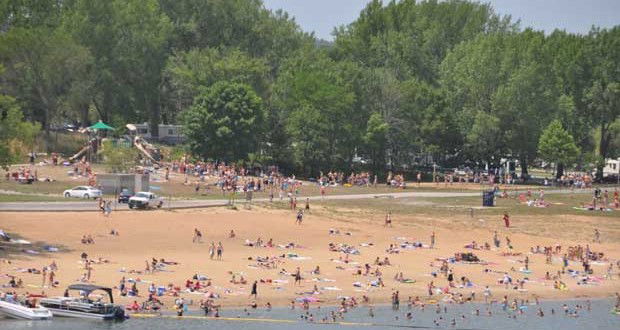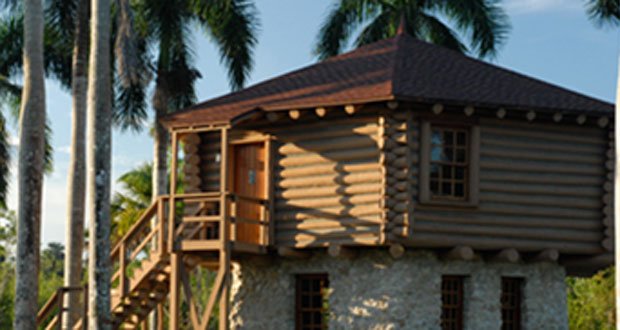When you think of a U.S. National Park, you may imagine a vast landscape with a sole hiker in the foreground. Many visitors hope for this unique experience, but recently, gridlocked traffic, confusing reservations, and other issues have left many outdoor visitors unhappy.
Videos by Outdoors
Crowds and long lines have become standard as visitors continue to set new records. In 2022, the National Park Service broke the 2021 visitation record by nearly 15 million people. In all, 312 million people visited the U.S.’s public lands last year, slightly down from the highest point set in 2019 of 327 million.
In many ways, the crowds are good news, because it means more people are getting outdoors. Most parks have celebrated the fact that younger generations are visiting. Unfortunately, these crowds also put a heavy burden on the parks’ limited staff and resources.
With all that said, there may actually be signs of slowing visitation. Could the popularity of national parks be cooling off after a period of intense visitation? This change isn’t necessarily a good or bad thing, but it is another shift park systems need to navigate.
Getting Quieter in Far West Texas

Some of the earliest signs of a slower year are already underway in Big Bend National Park. The Texas park sits along the Rio Grande, with Mexico just on the other side. It may surprise many that the desert park has its own mountain range in the Lone Star State. While more popular in recent years, Big Bend is challenging to get to. The closest large city is El Paso, which is still more than a four-hour drive, and Houston is easily a nine-hour drive.
“As far as visitation itself goes, it is starting to drop off. In 2022, they saw about 520,000 folks, and they’re on track to kind of trend back downward this year as well,” says Loren Riemer, the executive director and CEO of the Big Bend Conservancy.
The organization works with the park to help protect its wild spaces and fundraise for conservation and other efforts. Riemer has led the Big Bend Conservancy since 2021 when the park hit its peak in visitation. She said they saw a drop in visitors last year, and this year that slowing trend seems to continue.
The park sits in Far West Texas, where the temperatures can routinely hit the triple-digits, giving them the unique perspective that the busiest time of year has already passed. The height of visitation is usually spring break when kids are out of school, and that’ll pick back up again around Thanksgiving.
Riemer has at least one theory on why fewer people may be heading to Big Bend.
“As COVID starts to drop off and people are more comfortable doing air travel or international travel, it’s starting to broaden some horizons,” says Riemer. “Whereas a lot of folks were spending a lot more time outside or doing the travel that they could within the state during the height of COVID, which I think really drove those higher numbers in 2021.”
It’s important to note that while these numbers are trending down, it’s still a staggering explosion in guests compared to what the park saw a decade ago, when it had just over 300,000 people visit.
Riemer said one of the more prominent trends is first-time visitors coming to the park.
“What’s really fascinating to me is even as that number comes down, this park is seeing a lot of first-time visitors. Which from both a conservation and safety standpoint, we want to be sure that folks are well-educated before they arrive at the park, knowing what a remote location it is and how extreme the temperatures can be out there,” says Riemer. “We’re really trying to work in coordination with the park to ensure that those first-time visitors are prepared for what they might experience upon visiting.”
From a National Perspective

While this may be the scene at Big Bend, other parks are still crawling with traffic. Yosemite National Park, one of the most popular parks in the nation, has experienced traffic gridlock. Park officials have regularly posted on their Instagram and other platforms to update the public about the parking situation and announce other issues. Commenters are replying with backlash and questions about why the park removed the reservation system this year.
Officials with the National Park Service (NPS) continue to monitor this and all places that fall under the umbrella of the NPS.
“We don’t do predictive visitation monitoring, and we also don’t have a good way to provide sort of a nationwide sense right now of trends for 2023,” says Jenny Anzelmo-Sarles, the chief of public affairs and chief spokesperson for the NPS. “What we’re looking at is the sort of overall tourism trends and what we’re seeing in tourism for American tourists generally. For example, there are increases in international visitation, with more people traveling overseas this year than in past few years.”
A quick check of this year’s travel predictions does show a higher rate of international destinations for U.S. tourists than recent years.
Anzelmo-Sarles and her Washington, D.C., team stay in close communication with all NPS destinations. They’re quick to note that the yearly U.S. National Park numbers include more than places like Yellowstone. From national historical sites to seashores, the long list totals 424 different sites, and 395 of those parks count visitation numbers. Many are seasonal stops, and operating a park is similar to running a city.
“I often think of managing national parks like, a superintendent who manages a national park, like the mayors of small towns,” says Anzelmo-Sarles. “They’re managing water and wastewater systems, utilities, and roads and trails. Along with housing, emergency, and public safety services from law enforcement to fire to emergency medical services. So reopening these parks is like reopening a small town for a summer season.”
The variations and complexity of these parks make it hard to figure out a one size fits all model. While the numbers can go up and down for each destination, predicting yearly visitation takes time. National Park Officials say the best thing visitors can do is simply be prepared and check out the parks less traveled.
“There’s a broader awareness of the popularity and the need to plan to visit national parks so that people can have good experiences,” says Anzelmos-Sarles. “We have been placing emphasis in the National Park Service on encouraging people to explore the hidden gems, lesser-known places and parks. And we are seeing an impact from that.”
So much so that last year, many of the parks that set new records for visitation were ranked in the bottom 50% of parks as far as popularity. That means some of the quietest places now deal with much larger crowds.
Waiting for Campers in the Pacific Northwest
San Juan Islands National Historical Park is one destination that saw this huge spike as a once lesser-known place. The island destination sits far from the offices of Washington, D.C., and has an opposite feel compared to the dry high-desert heat found in Big Bend. Visitors can see orcas and follow trails leading to historical sites documenting an event called “The Pig War.”
The park in the northwest corner of Washington State saw record-breaking numbers of visitors in the last few years, but in May, that number dropped by 40%. An Instagram post from the park reminds guests they are ready for a visit.
“I see our park as a little similar to a Santa Monica Mountains or a Golden Gate National Recreation area. We’re very community-based,” says Elexis J. Fredy, the superintendent of both the San Juan Islands and nearby Ebey’s Landing National Historical Reserve. “The San Juan Islands is really predominantly regional. The Puget Sound makes up about 80% of the visitation.”
Fredy is speaking from her cell phone, pulled over on the side of the road on her way to Ebey’s Landing. Despite only being about a two-hour drive to busy downtown Seattle, her phone service goes in and out, a reminder of how rural some of these NPS destinations can be.
Fredy says the San Juan Island National Historical Park visitation peaked in 2016 and then continued to see record numbers—with the obvious exception of 2020. She says the new recent slowdown has also impacted the local economy, hurting the small communities in the San Juan Islands.
“Tourism in San Juan County is really critical to the economy, like it is in most rural places that have beautiful areas that people come to visit,” says Fredy. “I have also been hearing from, as business owners, that it’s not as robust as it was the two prior springs.”
Fredy believes this may change as the summer continues, especially as more kids are out of school and families in Washington State take vacations.
Fredy hopes the trend mentioned by NPS Chief Spokesperson Jenny Anzelmo-Sarles of seeking out alternative lesser-known destinations continues.
“San Juan Island National Historical Park doesn’t have hundreds of thousands of backcountry wilderness in high alpine environments. That’s what you go to Olympic and Mount Rainier and North Cascades to do,” says Fredy. “But if you want to come beach comb, you know, walk along the coast, and look for orcas, see foxes, and enjoy the salt area, people come here.”
Continuing to Pack Your Patience

Regardless of park size or record-breaking crowds, one thing is true about any NPS destination—they’re working to bring the best experience to each guest.
Official numbers for this year won’t be available until 2024, but even if fewer people are getting outdoors this summer, there will still be larger crowds than anyone saw a decade ago. In most cases, parks have not added a sustainable amount of staff to counterbalance the increase in people.
NPS officials ask that visitors come to parks prepared and do their research before heading there. Officials say this ensures everyone has the best time possible in America’s outdoor spaces.
“We encourage everyone to plan like a park ranger. Our website can point you to [. . .] our 10 Insider Tips from Rangers to make the most out of national park vacations and adventures,” says Chief Spokesperson Jenny Anzelmo-Sarles. “Have a plan and backup plan so that the only surprises are the happy ones. We also encourage everyone to visit the park website they’re planning to go to before they visit for the latest information on conditions and reservations that might be needed.”
What has your experience been in U.S. National Parks this year compared to previous years? Tell us in the comments.
